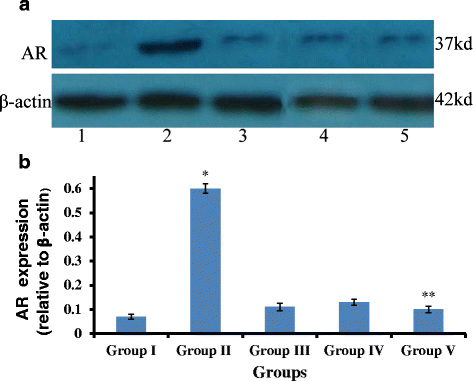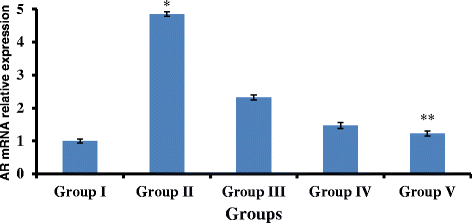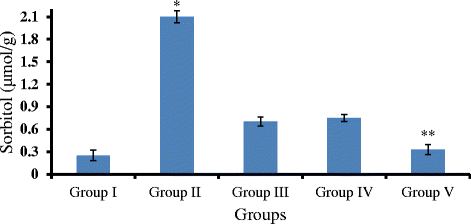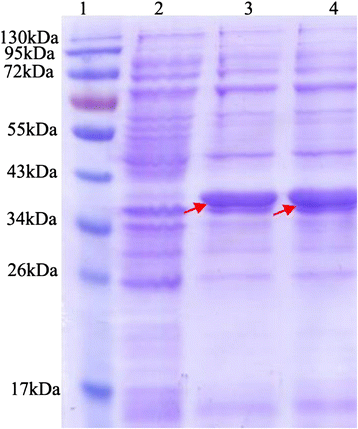Investigation of synergistic mechanism and identification of interaction site of aldose reductase with the combination of gigantol and syringic acid for prevention of diabetic cataract
- PMID: 27520089
- PMCID: PMC4983052
- DOI: 10.1186/s12906-016-1251-5
Investigation of synergistic mechanism and identification of interaction site of aldose reductase with the combination of gigantol and syringic acid for prevention of diabetic cataract
Abstract
Background: Gigantol and syringic acid (SA) have been shown to synergistically prevent formation of diabetic cataract (DC). However, the exact mechanism of this effect is unknown. Here, we investigate the effect of these compounds on the activity of aldose reductase (AR) and cataract formation.
Methods: We examined the synergistic anti-cataract efficacy of gigantol and SA in the high glucose- and streptozotocin -induced DC rat model; synergism was evaluated using Jin's formula. We investigated possible mechanisms of action by measuring AR expression and activity and levels of sorbitol using enzyme kinetics, Western blot, and RT-PCR. Finally, we examined binding interaction between AR and both compounds using a combination of site-directed mutagenesis, recombinant expression of wild-type and mutant proteins, and enzyme kinetics.
Results: Combination treatment of gigantol and SA synergistically protected both HLECs(human lens epithelial cells) grown in vitro and DC formation in STZ-induced rats in vivo. Synergism was attributed to inhibition of AR activity, downregulation of AR expression via impaired transcription, and decreased sorbitol levels. Enzyme kinetics studies showed that the activity of an AR Asn160Ala mutant protein was significantly decreased compared to wild-type AR, confirming that Asn160 is a key residue for interaction between AR and both compounds.
Conclusion: Combined administration of gigantol and SA synergize to enhance anti-cataract efficacy. The synergistic effect is mainly attributed to disruption of the polyol pathway and inhibition of AR activity.
Keywords: Aldose reductase; Diabetic cataract; Gigantol; Site-directed mutagenesis; Synergism; Syringic acid.
Figures








Similar articles
-
[Study on anti-cataract effect of gigantol combined with syringic acid and their mechanism].Zhongguo Zhong Yao Za Zhi. 2012 Aug;37(16):2429-34. Zhongguo Zhong Yao Za Zhi. 2012. PMID: 23234143 Chinese.
-
Gigantol from Dendrobium chrysotoxum Lindl. binds and inhibits aldose reductase gene to exert its anti-cataract activity: An in vitro mechanistic study.J Ethnopharmacol. 2017 Feb 23;198:255-261. doi: 10.1016/j.jep.2017.01.026. Epub 2017 Jan 16. J Ethnopharmacol. 2017. PMID: 28104409
-
Anti-osmotic and antioxidant activities of gigantol from Dendrobium aurantiacum var. denneanum against cataractogenesis in galactosemic rats.J Ethnopharmacol. 2015 Aug 22;172:238-46. doi: 10.1016/j.jep.2015.06.034. Epub 2015 Jun 25. J Ethnopharmacol. 2015. PMID: 26119284
-
Recent studies of aldose reductase enzyme inhibition for diabetic complications.Curr Med Chem. 2003 Aug;10(15):1329-52. doi: 10.2174/0929867033457377. Curr Med Chem. 2003. PMID: 12871133 Review.
-
Aldose reductase and its inhibition in the control of diabetic complications.Ann Clin Lab Sci. 1993 Mar-Apr;23(2):148-58. Ann Clin Lab Sci. 1993. PMID: 8457142 Review.
Cited by
-
Phytochemicals: Target-Based Therapeutic Strategies for Diabetic Retinopathy.Molecules. 2018 Jun 23;23(7):1519. doi: 10.3390/molecules23071519. Molecules. 2018. PMID: 29937497 Free PMC article. Review.
-
Identification Of Natural Compound Derivative For Inhibition Of XLF And Overcoming Chemoresistance In Colorectal Cancer Cells.Drug Des Devel Ther. 2019 Nov 6;13:3823-3834. doi: 10.2147/DDDT.S215967. eCollection 2019. Drug Des Devel Ther. 2019. PMID: 31806933 Free PMC article.
-
Biological Nitrification Inhibitors with Antagonistic and Synergistic Effects on Growth of Ammonia Oxidisers and Soil Nitrification.Microb Ecol. 2024 Nov 20;87(1):143. doi: 10.1007/s00248-024-02456-2. Microb Ecol. 2024. PMID: 39567372 Free PMC article.
-
Curcumin Reverses 5-Fluorouracil Resistance by Promoting Human Colon Cancer HCT-8/5-FU Cell Apoptosis and Down-regulating Heat Shock Protein 27 and P-Glycoprotein.Chin J Integr Med. 2019 Jun;25(6):416-424. doi: 10.1007/s11655-018-2997-z. Epub 2018 Nov 27. Chin J Integr Med. 2019. PMID: 30484020
-
Gigantol inhibits cell proliferation and induces apoptosis by regulating DEK in non-small cell lung cancer.Exp Ther Med. 2021 Nov;22(5):1317. doi: 10.3892/etm.2021.10752. Epub 2021 Sep 17. Exp Ther Med. 2021. PMID: 34630671 Free PMC article.
References
MeSH terms
Substances
LinkOut - more resources
Full Text Sources
Other Literature Sources
Medical
Research Materials

